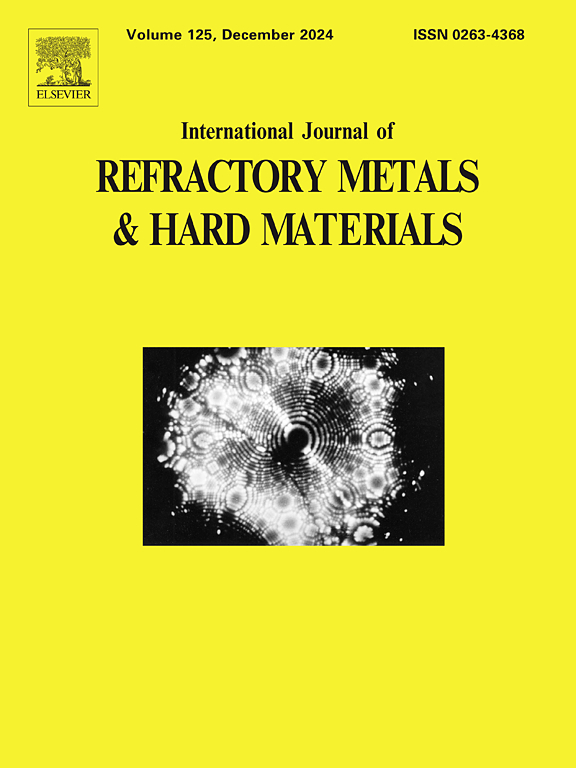通过气体钨极氩弧焊堆焊钛合金上的 Ti-6Al-3Nb-2Zr-1Mo/WC 复合涂层的粘结行为
IF 4.2
2区 材料科学
Q2 MATERIALS SCIENCE, MULTIDISCIPLINARY
International Journal of Refractory Metals & Hard Materials
Pub Date : 2024-10-23
DOI:10.1016/j.ijrmhm.2024.106931
引用次数: 0
摘要
本研究将碳化钨(WC)陶瓷颗粒引入气体钨极氩弧焊(GTAW)的熔池中,成功制备出无凝固裂纹且稀释度较低的复合涂层。研究深入分析了结合界面的形成机理和特性。结果表明实现了冶金结合。WC 颗粒的溶解行为和 W 元素向热影响区的扩散促进了熔合线下方特殊的 β(Ti,W)扩散层的形成。(Nb,Ti)C 主要分布在扩散层附近。纳米压痕测试结果表明,界面区域存在显著的不均匀性。断裂涂层的断裂面显示,钛基体呈现准脆性断裂,而颗粒则呈现脆性断裂。在剪切试验中发生脱粘断裂的涂层断裂面在剪切方向上发生了塑性变形。本文章由计算机程序翻译,如有差异,请以英文原文为准。
Bonding behavior of Ti-6Al-3Nb-2Zr-1Mo/WC composite coating on titanium alloy by gas tungsten arc welding cladding
In this study, tungsten carbide (WC) ceramic particles were introduced into the molten pool of gas tungsten arc welding (GTAW) to successfully prepare a composite coating without solidification cracking and with lower dilution. The formation mechanism and properties of the bonding interface are deeply analyzed. Results demonstrate that metallurgical bonding was achieved. The dissolution behavior of WC particles and the diffusion of W element into the heat-affected zone promoted the formation of a special β(Ti, W) diffusion layer below the fusion line. (Nb, Ti)C was mainly found distributed close to the diffusion layer. Nanoindentation test results show remarkable inhomogeneity in the interface area. The fracture surface of the broken coating revealed that the titanium matrix exhibited quasi-cleavage fracture, while the particles displayed brittle fractures. The fracture surface of coatings that experienced decohesive rupture in the shear test underwent plastic deformation in the shear direction.
求助全文
通过发布文献求助,成功后即可免费获取论文全文。
去求助
来源期刊
CiteScore
7.00
自引率
13.90%
发文量
236
审稿时长
35 days
期刊介绍:
The International Journal of Refractory Metals and Hard Materials (IJRMHM) publishes original research articles concerned with all aspects of refractory metals and hard materials. Refractory metals are defined as metals with melting points higher than 1800 °C. These are tungsten, molybdenum, chromium, tantalum, niobium, hafnium, and rhenium, as well as many compounds and alloys based thereupon. Hard materials that are included in the scope of this journal are defined as materials with hardness values higher than 1000 kg/mm2, primarily intended for applications as manufacturing tools or wear resistant components in mechanical systems. Thus they encompass carbides, nitrides and borides of metals, and related compounds. A special focus of this journal is put on the family of hardmetals, which is also known as cemented tungsten carbide, and cermets which are based on titanium carbide and carbonitrides with or without a metal binder. Ceramics and superhard materials including diamond and cubic boron nitride may also be accepted provided the subject material is presented as hard materials as defined above.

 求助内容:
求助内容: 应助结果提醒方式:
应助结果提醒方式:


